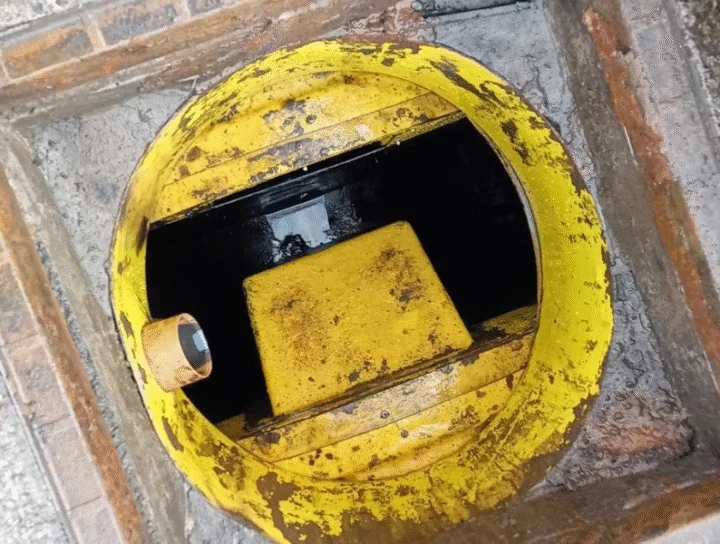Balancing ponds and attenuation ponds are essential components of sustainable urban drainage systems (SuDS), often seen in new-build housing estates and commercial developments. In this article, we’ll explore what balancing and attenuation ponds are, how they work, their benefits, common problems and maintenance requirements.
Balancing Ponds and Attenuation Ponds, Contents:
- What is a Balancing Pond?
- What is an Attenuation Pond?
- Balancing Ponds & Attenuation Ponds: What’s the Difference?
- Balancing and Attenuation Pond Problems
- Do Balancing and Attenuation Ponds Eliminate Flood Risks?
- Balancing and Attenuation Pond Maintenance
- Balancing & Attenuation Pond FAQS
What is a Balancing Pond?
A balancing pond, also called a balancing reservoir or balancing lake, is an engineered structure that helps regulate rainwater flow into drainage systems. By temporarily storing excess water during heavy rainfall, it gradually releases it to maintain a steady flow and prevent flooding. These ponds play a vital role in protecting drainage networks from becoming overwhelmed and reducing flood risks during intense storms.
How Does a Balancing Pond Work?
When it rains, balancing ponds collect surface water and temporarily store it. Some of this water is absorbed into the ground, while some evaporates into the atmosphere. The remaining excess water is gradually released into the drainage system at a controlled rate. By slowing the release of rainwater, balancing ponds act as a buffer against sudden surges that could otherwise overwhelm downstream drainage systems. Strategically placed in flood-prone areas, these ponds essentially function as temporary reservoirs, offering both flood prevention and water management benefits.
Where Do You Find Balancing Ponds?
You’ll often find a balancing pond on new-build developments, such as housing estates or commercial developments. This is because the drainage systems on new construction projects can become easily overwhelmed due to the sudden discharge of water in the region.
What Are the Benefits of Balancing Ponds?
As rural land is increasingly converted into housing and commercial developments, balancing ponds help manage the sudden surge in water discharge, reducing the risks of flooding and water pollution in these areas.
The key benefits of balancing ponds include:
- Flood Prevention: Acting as reservoirs, they collect and store excess water, releasing it gradually to prevent flooding and protect infrastructure.
- Community Safety: They reduce flooding risks in vulnerable areas, such as waterlogged rural regions and slippery roads, safeguarding communities.
- Water Quality Improvement: Balancing ponds naturally filter and purify water, ensuring cleaner water is released into the environment.
- Sustainable Urbanisation: Balancing ponds enable towns and cities to expand without increasing flood risks or compromising water quality, supporting sustainable development.
How Do Balancing Ponds Improve Water Quality?
When rainwater and surface runoff collect in a balancing pond, sediments naturally settle at the bottom, while pollutants and contaminants are filtered out through natural processes. This helps to ensure that the water gradually released into drainage systems or nearby watercourses is cleaner and of higher quality. By mimicking natural filtration, balancing ponds contribute to healthier ecosystems and reduce the environmental impact of urban runoff.
 What is an Attenuation Pond?
What is an Attenuation Pond?
Wondering what an attenuation pond is? An attenuation pond, also referred to as an attenuation basin, is specifically designed to slow down and control the flow of stormwater runoff before it is discharged into drainage systems or watercourses, reducing the risk of flooding.
Balancing Ponds & Attenuation Ponds: What’s the Difference?
While balancing ponds and attenuation ponds share similarities, they serve slightly different purposes.
- Water Retention: A balancing pond?may?hold water permanently, while an attenuation pond is typically dry under normal conditions and only holds water temporarily during periods of heavy rainfall.
- Primary Function: Attenuation ponds are primarily focused on reducing peak flow rates, while balancing ponds are designed to regulate water levels over time.
Balancing and Attenuation Pond Problems
While balancing and attenuation ponds offer many benefits, there are some potential issues and downsides to consider:
- Invasive Species: Balancing and attenuation ponds can attract invasive species, such as algae and other problematic organisms, which may increase the need for regular maintenance.
- Safety Risks: To ensure public safety, balancing and attenuation ponds should be marked and securely fenced off to prevent accidents.
- Silt Build-Up: Without proper maintenance, silt and debris can accumulate in a balancing or attenuation pond, reducing its water-holding capacity and overall effectiveness.
Do Balancing and Attenuation Ponds Eliminate Flood Risks?
No single drainage solution can eliminate the risk of flooding. While these ponds play a crucial role in managing surface water runoff and reducing flood risks, they are most effective when integrated into a comprehensive drainage strategy.
To minimise the impact and potential damage caused by flooding, balancing and attenuation ponds should be combined with other measures to create a layered approach to flood management.
Balancing and Attenuation Pond Maintenance
Both balancing and attenuation ponds require routine maintenance and cleaning throughout the year to ensure they function effectively. To ensure optimal performance, annual or bi-annual inspections are recommended. These checks help identify wear and tear, allowing for timely maintenance and reducing the risk of costly issues.
Key maintenance tasks often include:
- Desilting: Using high-pressure water jets to remove silt and debris buildup.
- Emptying and Refilling: Occasionally emptying the pond for a deep clean before replenishing it with rainwater.
Contact Metro Rod for Support
Metro Rod can help avoid unwanted flooding through our balancing pond desilting services. Our tankers allow us to remove silt from balancing ponds, ensuring they remain efficient and operable.
Our local drainage experts are located nationwide and available 24/7, 365 days a year. They are dedicated to delivering fast, efficient, and trustworthy drainage solutions whenever you need them.
Talk to Your Local Metro Rod Specialist
We are always happy to arrange a free site assessment and no-obligation quotations for any work you might need. Alternatively, you can call our emergency hotline number on 0800 66 88 00.
Balancing & Attenuation Pond FAQS
Should attenuation ponds be fenced off?
Yes, fencing off attenuation ponds is often recommended to enhance safety and security. These ponds, designed to manage stormwater runoff, can pose risks such as deep water or slippery edges, especially during heavy rainfall.
Is a balancing pond a watercourse?
No, a balancing pond is not a watercourse. While both are involved in managing water, a balancing pond is engineered to temporarily store water and control surface water runoff, whereas a watercourse is a channel, like a river or stream, that continuously carries flowing water. Balancing ponds complement watercourses as they control the flow of excess water the channels.
Why do new housing estates have ponds?
By incorporating ponds, housing developments can maintain effective drainage systems while supporting the environment and enhancing the community’s surroundings.
Can attenuation ponds flood?
Extreme weather events or prolonged heavy rain can exceed their capacity, causing water levels to rise.
What is the difference between soakaway and attenuation?
A soakaway is an underground structure that allows collected water to slowly infiltrate into the surrounding soil. Attenuation involves temporarily storing stormwater before releasing it at a controlled rate, preventing flooding.

Talk to your local Metro Rod specialist
We are always happy to arrange a free site assessment and no obligation quotations for any work you might need. Alternatively, you can call our emergency hotline number on 0800 66 88 00
Get in touch Drainage Services


